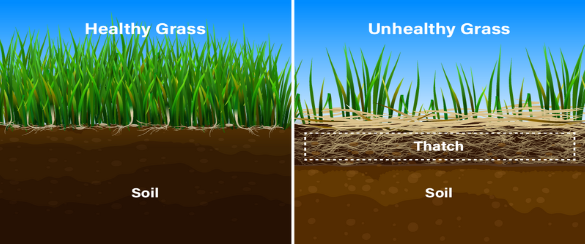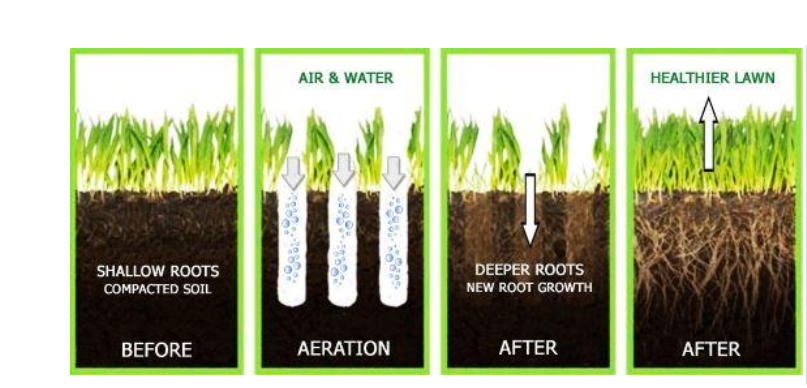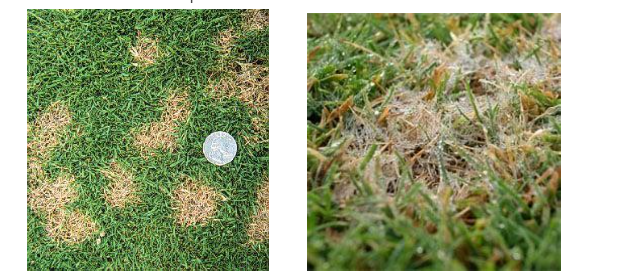- Spring is the perfect time to install new areas of turf.
- It’s the time to de-thatch existing lawns if required. Thatch is a build-up of dead, organic matter and excessive roots and stems that have developed within the profile of your grass. It is a natural process caused by your lawn producing more organic matter than what can be broken down. Some turf varieties will thatch more than others and overtime the height of your lawn can increase. If your lawn feels ‘spongy’ to walk on, you will probably have to remove the thatch to give your lawn the best chance of being healthy. Most home lawns don’t require annual dethatching. Many lawns will only require dethatching every five years or so.

It is also time to aerate or core your lawns. Lawn coring or aeration is the method of decompaction and breaking up the soil to allow air, water, and nutrients to flow in where needed. This is a fast way to reinvigorate your lawn by helping it to quickly access oxygen and nutrients straight into its root zone. Grass, like any other plant, needs to find the right balance of nutrients, air, and water to thrive. Your lawn can become so compacted simply by use and from organic matter buildup, that oxygen can’t get into the root. Water also cannot be absorbed properly, this results in water not being able to run through the soil profile, leading to dehydrated turf that is unable to grow as it should.

- Apply spring application of quality wetting agent and soil moisture retainer such as Aquaforce and Bi-agra.
- Apply a slow release, granular fertiliser along with carbon and humic to revitalise soil and plant health coming out of winter.
- Undertake a catch cup test prior to turning your sprinklers back on for the warmer months. Check out this video for how to do this. https://youtu.be/aT6ooJIdBaw
- https://youtu.be/KwLi1uO4L7s
- Look out for Dollar Spot fungus that shows up in turf, from spring to autumn. It appears as small straw-coloured spots on lawns, that are about the size of a dollar coin. In the early morning dew a fine spider like substance can be seen in the affected area. If the lawn is fertilised regularly and has correct nutrient levels, then chemical treatment is not necessary although Mancozeb Plus can be used if widespread.

Mow weekly at 15-20mm, refer to https://tgawa.com.au/turf-varieties/
